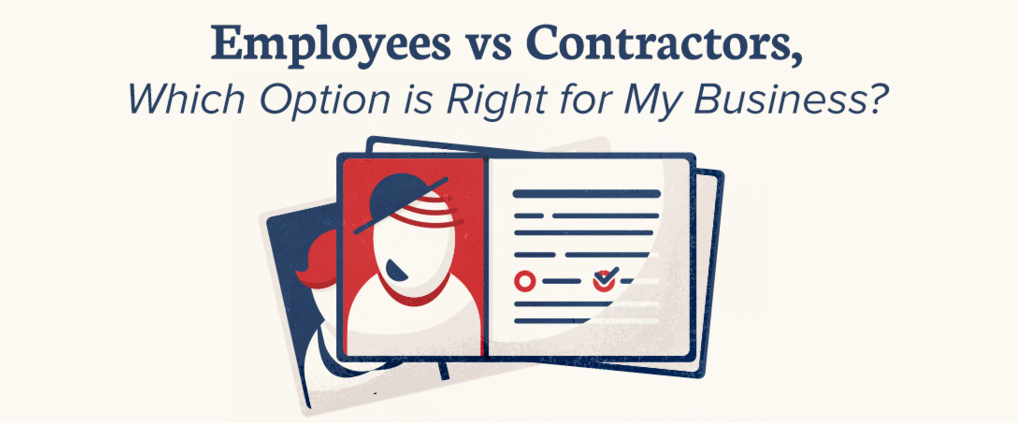Become an insider!
Get our latest payroll and small business articles sent straight to your inbox.

Updated January 2017 + [Infographic]
Remote working is on the rise, and it’s quickly spreading across the planet.
We do not need to look to a far off date in the future to realize the possibility of a remote workforce; it’s happening as we speak. Anyone with a reliable Wifi connection and decent work ethic can do it
For many workers, spending every day in an office is no longer a necessity. Working in a four by six cubicle from 9 to 5 is not a dream job for today’s workforce.
In this post, we will cover everything you need to know about remote working, its benefits for remote employees and employers and the differences between remote employment vs. self-employment.
- The Escape From Old Views on Remote Work
- The Dawn of Remote Work
- The Rise of the Remote Employees
- The Rise of Remote Employers
- The Rise of Remote Tools
- The Rise of Self-Employment
- The Need for Regulation
- The Battle for Location Independence
- The [Infographic] — Are Remote Workers Happier?
I still remember the first time I heard about remote working. I read a blog about all the benefits of working in different locations — how it stimulated creativity, made you a more well-rounded person and allowed you the flexibility to travel and live in the places you love.
You have to imagine those first blogs on remote working are doing quite well today.
At the time, the idea seemed novel. It was everything I could ever dream of. But I wasn’t running my own startup or producing a successful travel blog.
I never imagined my remote working lifestyle could become a reality as quickly as it did. Six months later, here I am, writing a blog about remote working. I am literally sitting in an Airbnb in Florida right now. An earlier draft of this blog was organized from the passenger seat of a car driving to Montreal.
I share this to shed a little light on how quickly the workforce is changing and how many opportunities there are to work from home. Despite it being my life desire, I had never even heard of remote working until this year. It’s now late 2015, and a quick search of #remotework on Twitter shows you new results every few minutes.
Now back to the evolution of it all.
The Escape From Old Views on Remote Work
Remote workers come in all shapes and ages. It can be a common misconception to think of remote workers as being young, reckless adventurers. The ultimate Perceivers on your Myers-Briggs personality type — open to possibilities, appear loose and casual, approaches work as play, spontaneous.
That may be true for some remote workers, but it’s certainly not the norm. The New York Times has pointed out that according to the Census Bureau the average remote worker is: a 49-year-old college graduate — man or woman — who earns about $58,000 a year and belongs to a company with more than 100 employees.
Working remotely has advantages for all sorts of workers: parents who want to be home when their kids get home from school, world travelers, homebodies, workers whose ideal job happens to be located across the globe. The list could go on and on.
The Dawn of Remote Work
The financial implications of the 2008 recession accelerated remote working. It encouraged many employees to seek alternative careers, including self-employment and building startups. Remote jobs also opened up additional opportunities for workers because they could search for jobs beyond their current location.
The numbers tell us that the traditional sense of the “office” is gradually getting displaced. According to Global Workplace Analytics, “Regular work-at-home, among the non-self-employed population, has grown by 103% since 2005 and 6.5% in 2014.”
Due to employee demand and cost reduction, many larger companies have been making the switch, at least partially, including powerhouses like Apple, Amazon, Dell, Intuit and IBM. For more examples, check out the full list of The 100 Top Companies with Remote Jobs in 2015, by FlexJobs.
Global Workplace Analytics says, “Fortune 1000 companies around the globe are entirely revamping their space around the fact that employees are already mobile. Studies repeatedly show they are not at their desk 50-60% of the time.”
The remote workforce trend has seen enormous growth, a trend that is likely to continue as millennials exert more of an influence on workplace culture and policies. Millennials want demand options, and employers will need to adapt in order to provide them.
The Rise of Remote Employees
There are many benefits of working remotely and it all depends on how you like to do your work.
Not having to spend the hours from 9 to 5 inside an office can be an appealing option. Instead of regulating work around office hours, it gives employees the advantage of working during the hours they are most productive.
Some people would rather work from 11 to 7, for example, or break up their day into chunks; two hours at a time can be an advantage for employees who work in bursts of energy, rather than with a steady and methodical approach.
Remote employees also save the time they would normally waste on a commute, which is extremely beneficial for anyone who values their time.
“Even short commutes stab at your happiness. According to the research,* commuting is associated with an increased risk of obesity, insomnia, stress, neck and back pain, high blood pressure, and other stress-related ills such as heart attacks and depression, and even divorce. But let’s say we ignore the overwhelming evidence that commuting doesn’t do a body good. Pretend it isn’t bad for the environment either.”
Working remotely is all about choice. Some employees find that they prefer working in a coffee shop or co-working space, separating home life from work life.
Based on a survey from Forbes, 5 of the top benefits of working from home were the following,
5) Fewer distractions (44%)
4) More productive (45%)
3) Avoid traffic (47%)
2) Save gas (55%)
1) Work/home balance (60%)
The author of the article, Kevin Kruse, says he opens every new employee relationship with this sentiment: “You can do your job wherever and whenever you want… you can even sit in a beach chair with a cocktail in hand for all I care… as long as you get our desired results.”
Readily offering the many benefits of working from home has allowed Kruse to hire top talent without any geographical restraints.
The Rise of Remote Employers
On the whole, both employees and employers can benefit from a remote workforce.
When employers limit potential hires to one specific location, they risk settling for less. If you find the right hire in another city, that individual may find it difficult, or flat out refuse, to uproot their life to move.
When you expand the search for the right employee globally – through telecommunication – the talent pool grows exponentially.
Global Workplace Analytics identifies a long list of employer benefits including:
- Improved employee satisfaction
- Reduced attrition
- Reduced unscheduled absences
- Increased productivity
- Reduced potential for discrimination
- Increased employee empowerment
- Expanded talent pool
A Happy Employee Makes for a Happy Business.
Giving your employees the freedom of location independence can also support the long-term growth and maintenance of your business.
Jason Fried, author of Remote: Office Not Required cheekily adds,
“if you can’t let your employees work from home out of fear they’ll slack off without your supervision, you’re a babysitter, not a manager. Remote work is very likely the least of your problems.”
When you can set reasonable goals and benchmarks for your employees, they can freely work when they feel they are the most productive – a win-win for both parties.
The Rise of Remote Tools
As more and more employees switch to working remotely, the need for tools to facilitate remote work is also steadily rising.
Working remotely means that employees cannot gather in the boardroom to discuss projects. If you have an employee in Pittsburgh and another in Dubai, how are you going to ensure that there is an open dialogue and free exchange of ideas?
An employee’s location may be remote, but thanks to the development of these online tools, their communication doesn’t have to be.
Take Slack, for instance. Slack is an app designed for business communication, similar to Facebook chat or the decades (centuries) old MSN. It enables employees to communicate clearly and efficiently through direct messages and group chats.
We use Slack ourselves and can’t imagine our office communication without it.
An easy to use and easy to set up tool, Slack was immediately raising millions around the world when it was launched in April 2014. As of April 2015, Slack was valued at $2.8 billion.
Now that’s a success story. And Slack isn’t the only one.
As of this June, Trello, a collaboration tool to organize projects, reached the $5 million user mark. This summer, Asana, an online tool for teams to track their work, had revenues in the low 10s of millions of dollars per year.
There’s also a high demand for online tools that make day-to-day work life simpler.
Any potential remote work problem can be solved by companies like DocuSign, which lets you sign a document from anywhere there’s a WiFi connection; Gyazo, which enables you to send screenshots and short video footage with one click; and iDoneThis, where you can share your daily accomplishments with your team.
Any service you could ever need or want online is out there. If you can think of something that isn’t, you’ve just come up with the idea for your next business venture!
Even though these tools make workers’ and employers’ lives easier within an office as well, there appears to be a connection between the rise of these tools and the rise of the remote workforce. Figuring out which came first may be a chicken vs. egg scenario.
Either way, there’s a large sea of tools available that make working remotely easier than ever before.
The Rise of Self-Employment
We have been doing a lot of talking about remote working, but self-employment is also on the rise.
It is important to point out that a remote worker can still be a part of a large company, and someone who is self-employed may still rent an office, but many self-employed people do work remotely, as working from home cuts down on costs.
The distinction to keep in mind is that a remote worker may or may not be an employee for your company, but a self-employed worker will always be considered a contractor in relation to your company.
Startups can employ contractors quickly and easily with less commitment, thereby lowering their burn rate. This has also gone hand-in-hand with millennial’s starting their own careers as a result of fewer traditional job opportunities.
With the recession eliminating jobs, many middle-aged skilled workers looked for other options and decided to go into business for themselves. Working from contract to contract can be a viable solution over steady employment, especially for digitally skilled workers.
Benefits of Contractors
As with many of the pros of hiring remote workers, contractors can be a practical option for employers.
There are limited number of people in any given location who will fit the exact role and specific experience a company requires, and on top of that, other companies in the area are vying for that same talent.
It can be hard to find and keep an employee in a competitive market if they are constantly being offered other positions, and in some cases, better salaries.
Hiring a contractor bypasses this difficulty, and it can cut down on the extra cost that comes with hiring an employee. For example, an employer does not have to spend money on training a new employee, as a contractor already has the training and the equipment to do the job well.
Employees cost a company a great deal of money, as employers have to account for applicable taxes along with a salary, benefits and training costs.Using a contractor also makes cutting ties easier, as terminating a contract is much easier than terminating an employee.
We provide a complete overview on Employees vs. Contractors in our free to download eBooks – for the US edition, click here and for the Canadian edition, click here.
The Need for Regulation
Unfortunately, the rise of contractors has also brought on a rise of regulations and penalties. There’s definitely a market backlash against employing contractors when they are actually employees.
The government won’t put up with startups purposely misclassifying contractors and hoping to get away with it.
A recent case involving Amazon has been highly publicized. The drivers who handle deliveries are suing Amazon because the company classified them as independent contractors, meaning the drivers haven’t been receiving the benefits that a registered employee would. If the drivers are proven right legally, Amazon has taken advantage of the independent contractor relationship and will pay a costly price for it.
The more this trend continues, the more policies there will be. Companies will need to continuously review contractor regulations to mitigate the risk of fines and penalties.
Misclassifying Contractors
If an IRS Form 1099, or the Canadian equivalent i.e. a T4A, has been filed, the unintentional classification of an employee as a contractor will result in financial liability.
Generally, that financial liability will be 1.5% of the salary of the federal income tax withholding amount, plus 20% of FICA taxes paid by the employee, plus all of what the employer should have paid.
Canada is just as strict when it comes to tax evasion. Directors are open to potential prosecution, fines of up to $25,000 and a jail term of 12 months for knowingly misclassifying an employee.
The Battle for Location Independence
One thing we do know in 2015 is that, for better or worse, everyone is different. Some workers continue to enjoy and prosper in an office environment. However, work-life balance has proven to be vitally important when it comes to health, productivity, creativity and general well-being.
When results are really what matter to a company, employers need to provide the environments that best enable employees to meet these results.
In the end, remote working is all about choice. There are certainly both pros and cons to office environments and to remote working, but the trend is clear and it is that remote work continues to be on the rise.
 Related: How to Pick the Perfect Coworking Space for Your Business
Related: How to Pick the Perfect Coworking Space for Your Business
The [Infographic] — Are Remote Workers Happier?
In order to answer this question, the productivity experts at Time Doctor transformed data from the employee engagement enthusiasts at TINYpulse and turned it into the infographic below.
To embed this infographic on your site, use the code below and link back to Time Doctor.
<a href=”https://biz30.timedoctor.com/remote-workers-infographic/”><img src=”https://biz30.timedoctor.com/images/2016/11/Infographic-TD_happy-remote.jpg” alt=”Are Remote Workers Happier Than Office Employees? (Infographic)” width=”750px” border=”0″ /></a>













